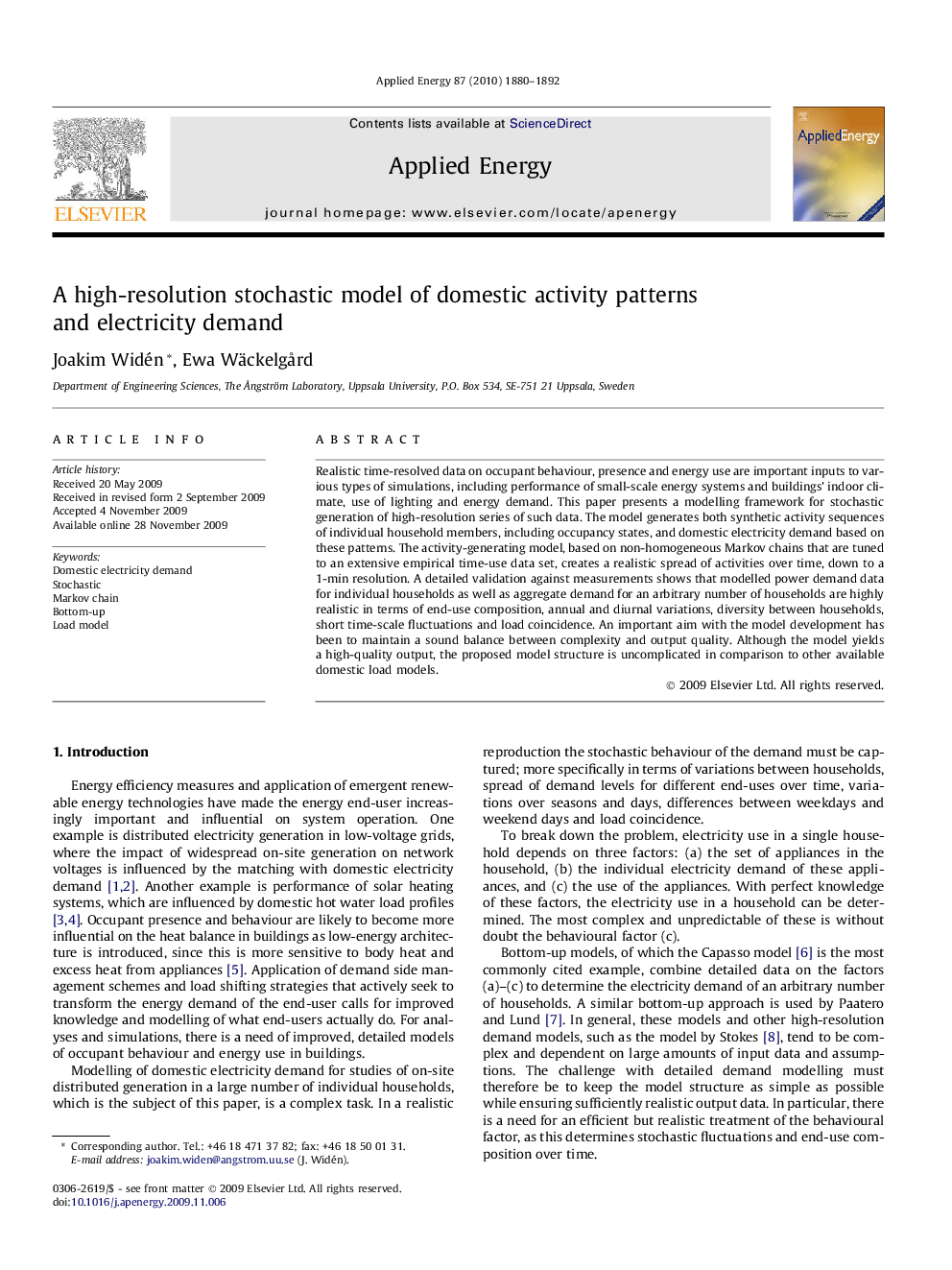| Article ID | Journal | Published Year | Pages | File Type |
|---|---|---|---|---|
| 244712 | Applied Energy | 2010 | 13 Pages |
Realistic time-resolved data on occupant behaviour, presence and energy use are important inputs to various types of simulations, including performance of small-scale energy systems and buildings’ indoor climate, use of lighting and energy demand. This paper presents a modelling framework for stochastic generation of high-resolution series of such data. The model generates both synthetic activity sequences of individual household members, including occupancy states, and domestic electricity demand based on these patterns. The activity-generating model, based on non-homogeneous Markov chains that are tuned to an extensive empirical time-use data set, creates a realistic spread of activities over time, down to a 1-min resolution. A detailed validation against measurements shows that modelled power demand data for individual households as well as aggregate demand for an arbitrary number of households are highly realistic in terms of end-use composition, annual and diurnal variations, diversity between households, short time-scale fluctuations and load coincidence. An important aim with the model development has been to maintain a sound balance between complexity and output quality. Although the model yields a high-quality output, the proposed model structure is uncomplicated in comparison to other available domestic load models.
